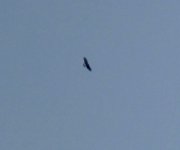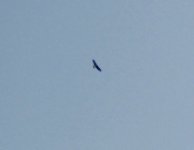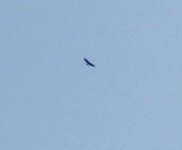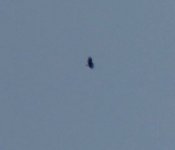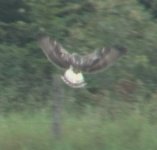KenM
Well-known member
Going through an old SD card...some of last years shots, taken on a cold (Northerly) April day. Extremely high, c300-400m heading North. It's fair to say that ''most'' local Buteos seen...are at a much lower elevation, from tree canopy height to a 100m max. Although the images are up to my usual ''high'' standard  Image 3. looking particularly ''vulturine'' and apart from the tail being pale (never seen a CB with such a contrast and a terminal band), Image 5 suggests a pale rump/head as well. On a probability scale...scarcity v commonality, what are the odds of a CB looking like this, as opposed to the occurrence of a high, Northerly drifting (scarce) migrant following the forest ''corridor'' at it's narrowest point running SW-NE. ?
Image 3. looking particularly ''vulturine'' and apart from the tail being pale (never seen a CB with such a contrast and a terminal band), Image 5 suggests a pale rump/head as well. On a probability scale...scarcity v commonality, what are the odds of a CB looking like this, as opposed to the occurrence of a high, Northerly drifting (scarce) migrant following the forest ''corridor'' at it's narrowest point running SW-NE. ?
Cheers
Cheers




